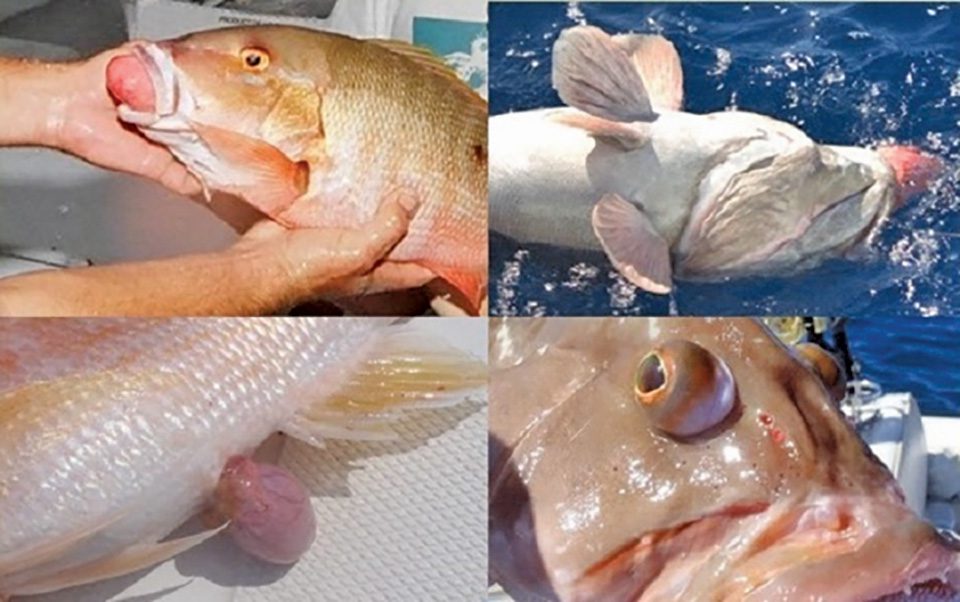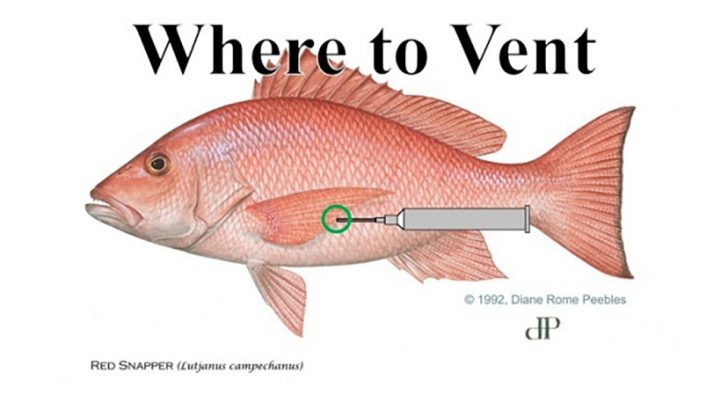By Melissa Crouch, Florida FWC
It’s the time of year when attention turns to deep-water species like snapper and grouper. When releasing these fish, anglers should look for signs of barotrauma and be prepared to respond. Handling and releasing fish to give them the highest chance for survival helps conserve our fisheries for the future.
Barotrauma is seen in many fish caught at depths greater than 50 feet. It is caused by pressure changes leading to an expansion of gases in the swim bladder. Signs of barotrauma include the stomach coming out of the mouth, bloated belly, distended intestines and bulging eyes.
Barotrauma can cause damage to internal organs and can be fatal unless appropriate steps are taken. It’s important to have tools available and know how to use them to help fish return to the bottom more safely.
Descending devices take fish back down to a depth where increased pressure from the water will recompress swim bladder gases. They fall into three categories: mouth clamps, inverted hooks and fish elevators. With proper set-up and practice, descending devices can be easy to use and make a big impact on the survival of released fish.
Venting tools are sharp, hollow instruments that treat barotrauma by releasing expanded gas from the swim bladder, enabling fish to swim back down. Fillet knives, ice picks, screwdrivers and gaffs are not venting tools and should never be used to vent a fish. Venting a fish incorrectly may do more harm than good.
To properly vent a fish, lay it on its side on a cool, wet surface. A venting tool should be inserted 1 to 2 inches behind the base of the pectoral fin, under a scale at a 45-degree angle, just deep enough to release trapped gasses. Never insert a venting tool into a fish’s belly, back or stomach that might be protruding from its mouth.
Descending devices and venting tools should only be used when fish show one or more signs of barotrauma and cannot swim back down on their own. It is essential to work quickly to return the fish to the water as quickly as possible.
Anglers should also use proper gear when fishing for reef fish. Non-stainless steel inline (non-offset) circle hooks with the barb crimped down often hook in the mouth rather than the gut, making it easier to release fish. Dehooking tools also help quickly release fish so you can get back to fishing.
To learn about reef fish gear rules for circle hooks and dehooking tools, visit MyFWC.com/Marine and click on “Recreational Regulations,” then click “Gear Rules” under the Reef Fish tab.
To learn more about proper fish handling techniques, visit MyFWC.com/FishHandling.

